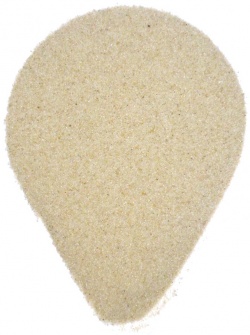Sand
Jump to navigation
Jump to search
This article needs expert input. Please don't rely on it yet.
Sand may be the most widely used building material of all.
Sand is tiny stone particles, mostly quartz. It comes in different varieties, each one better for certain tasks. In most cases another sand type can be used instead if necessary.
Today the majority of building sand is dredged from the sea bed.
Types of Sand
Sharp sand & builder's sand are the most popular sands. Both are used for brickwork and bedding paving. Cue argument about what should be used for what...
Builder's Sand
- General purpose building sand
- somewhat rounded grain shape
- dredged from the sea bed
- May contain some clay
- tends to contain some salt
- For kid's sandpits choose clay free yellow sand to avoid stain
- Red sand with lime can produce a light pink mortar (gently brushing the surface when 'green' (softly set) exposes more of the red sand)
Sharp Sand
- Grittier than builder's sand
- contains larger particles too
Kiln Dried Sand
- aka Jointing sand
- Minimal clay content for good stability
- Dried sand flows well with no stickiness
- Used for filling block paving joints
Silver Sand
- Fine sand
- Used in final plaster coat
- Light iron-free colour
Suppliers
Nearly all building material outlets sell sand. It can also be obtained from
- garden centres
- ...
See also Suppliers
Alternatives
Occasionally alternatives to sand are used, such as stone waste. See Mortar Mixes
